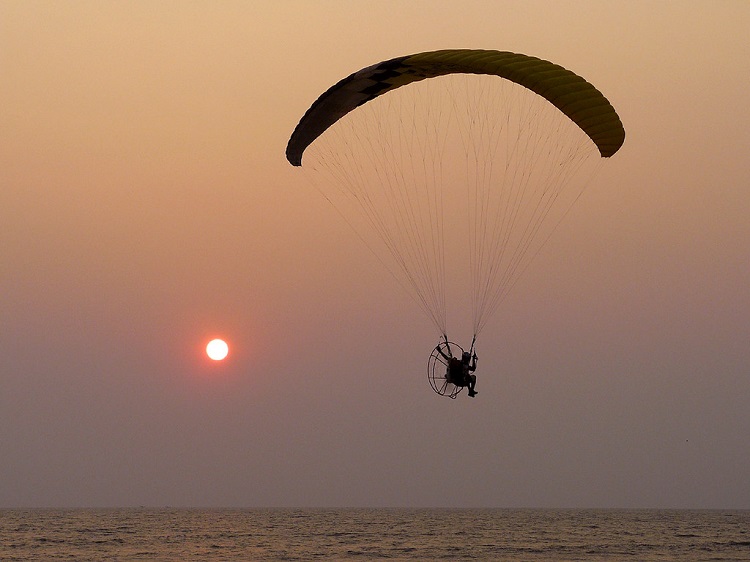Paragliding offers a unique blend of excitement, freedom, and breathtaking views. The prospect of soaring above stunning landscapes is irresistible to many adventure seekers. Yet, this thrilling sport comes with inherent risks, which often lead to the question: how dangerous is paragliding? Understanding the safety aspects and potential dangers can help individuals make informed decisions before taking flight.
What Does Paragliding Involve?
Paragliding is a recreational and competitive sport where a person flies a lightweight, free-flying, foot-launched glider. The flier is secured in a harness suspended below a fabric wing. Steering and altitude control are managed by manipulating the lines connected to the glider. Unlike hang gliding or skydiving, paragliding does not involve any motorized equipment, making it quieter and more serene.
Understanding the Risks
Every sport has its dangers, and paragliding is no exception. The primary risks in paragliding stem from various factors including weather conditions, pilot error, equipment failure, and the terrain.
-
Weather Conditions: Weather plays a significant role in paragliding safety. Strong winds, sudden gusts, and thermals (rising pockets of warm air) can destabilize a glider and lead to accidents. Pilots must have comprehensive knowledge of meteorology to assess whether conditions are suitable for safe flying. Inexperienced pilots can misjudge weather patterns, increasing the likelihood of mishaps.
-
Pilot Error: Pilot experience and training are crucial in minimizing risks. Poor decision-making, lack of preparation, or incorrect reactions to sudden changes can result in accidents. For example, choosing an unsuitable takeoff site or failing to maintain control during turbulent conditions can lead to serious incidents. Proper training and adhering to safety protocols significantly reduce these risks.
-
Equipment Failure: Modern paragliding gear is designed with safety in mind and must meet stringent safety standards. However, older or poorly maintained equipment can pose a significant danger. Ensuring regular equipment checks and replacing worn-out parts is essential for safe flying. Common issues such as tangled lines or canopy tears can cause mid-flight complications if overlooked.
-
Terrain Hazards: The takeoff and landing areas are critical aspects of paragliding safety. Uneven, rocky, or restricted areas can increase the difficulty of both launching and landing, leading to potential injuries. The surrounding landscape—whether mountainous or coastal—also affects the complexity and safety of a flight.
How Does Paragliding Compare to Other Adventure Sports?
It’s important to compare paragliding to other adventure sports for perspective. While it carries inherent risk, it isn’t considered the most perilous activity, especially when looking at extreme sports like BASE jumping or free solo climbing. Some studies indicate that paragliding has a lower fatality rate than skydiving, thanks to its slower speeds and the pilot’s greater control over their flight path.
Even when compared to more conventional activities like driving or skiing, understanding the context of these risks is useful. Although paragliding might have higher inherent dangers than driving, proper training, situational awareness, and experience significantly mitigate these risks.
Safety Measures for Paragliding
Understanding and implementing safety measures is key to making paragliding safer:
-
Training and Certification: Undertaking a comprehensive training course from a certified paragliding school is essential. These courses teach crucial skills like how to read weather conditions, emergency maneuvers, and basic flying techniques.
- Weather Assessment: Always check the weather forecast and conditions before flying. Avoid flying in strong winds, stormy weather, or areas known for sudden weather changes.
- Equipment Checks: Regular inspections of the canopy, harness, and lines can prevent equipment-related incidents. Investing in reliable gear and carrying a reserve parachute adds an extra layer of safety.
-
Flight Planning: Choose takeoff and landing areas that provide enough space and are free from obstacles. Plan your flight path, considering any nearby power lines, trees, or rugged terrain.
-
Safety Courses: Participating in advanced safety courses can teach pilots how to handle unforeseen incidents like collapses or spins.
Common Misconceptions About Paragliding Safety
Several misconceptions surround paragliding, often exaggerating the risks. Here are a few myths debunked:
-
Paragliding Is as Dangerous as Base Jumping: While both involve flying, the control, preparation, and risk levels are vastly different. Paragliding provides more stability and can be paused mid-flight by pilots choosing calmer conditions.
- Accidents Only Happen to Novices: While experience greatly reduces risk, even seasoned pilots must remain vigilant. Complacency can lead to poor decision-making and accidents.
-
Paragliders Have No Control Over the Flight: Contrary to popular belief, pilots have significant control over their gliders, managing both direction and altitude. The real challenge lies in mastering how to use that control effectively in varied conditions.
Is Paragliding Worth the Risk?
The thrill and freedom of paragliding captivate enthusiasts worldwide. For many, the sport is worth the calculated risks. Like all activities, the danger can be reduced with the right approach. Taking necessary precautions, acquiring proper training, and using modern, well-maintained equipment contribute to a safe flying experience.


